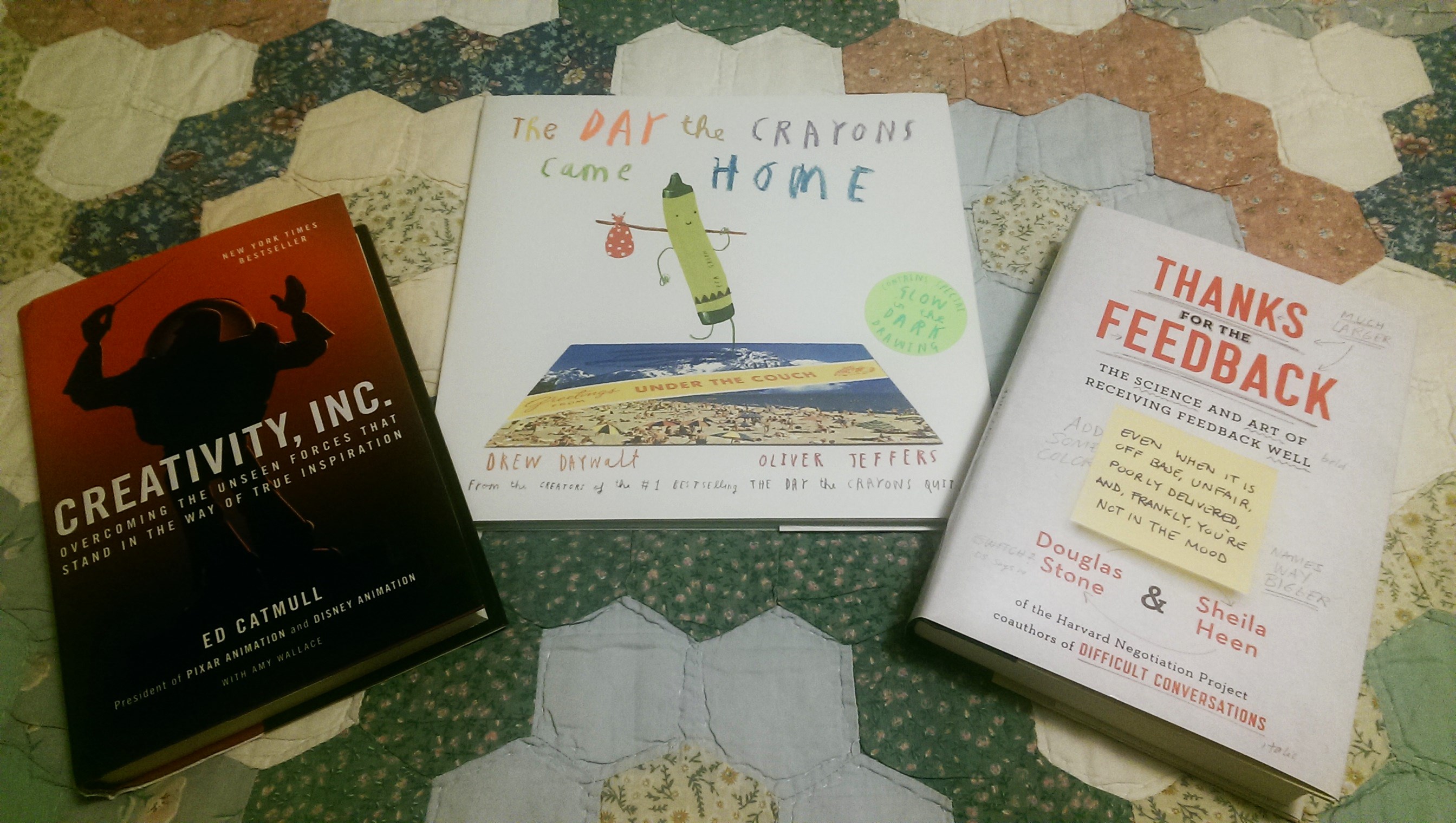
 Photo Credit: Amazon.com (l) & Deb Mills (r)
Photo Credit: Amazon.com (l) & Deb Mills (r)
Dave, the husband in my story, has always pointed me in the direction of transformative books and learning experiences. That path converged with this year’s Global Leadership Summit and Ed Catmull’s Creativity, Inc.
Bill Hybels interviewed Ed Catmull about his role in co-founding Pixar Animation Studios and pioneering the field of computer animation. Now President of Pixar Animation and Disney Animation, he has an extraordinary story to tell of leading creatives in innovative film-making. Mr. Catmull’s wisdom and humility can be well-applied in any workplace situation. Photo Credit: brainpickings.org
Photo Credit: brainpickings.org
“Science and art are not incongruous. Art isn’t about drawing; it’s about learning to see. Which business or professions do you not want to have enhanced ability to see?”
During this interview at GLS15, he talked about the business processes he uses in film-making. We can relate this level and quality of accountability in any organization or company:
- Teams working together (using a Brain Trust – a group of colleagues all acting as peers, with vested interest, giving feedback;
- When failures happen in production – embracing [failure] but at the same time dealing with it with both total candor and kindness; and
- Operating within constraints (a budget) – actually pushes creativity higher and delivers better outcomes.
“Stories influence the world. We want to use story-telling for good.”
Listening to Ed Catmull talk about leading at Pixar and Disney whetted our appetites to read his book Creativity, Inc.
Originally, Mr. Catmull worked in the computer graphics department of Lucasfilm, in the beginning years of computer animation. In his book, he tells about his incredible journey in those early years right through to today. It was a wildly bumpy road at first and the work was almost sidelined had it not been for Steve Jobs buying Pixar from Lucasfilm.
Toward the end of the book, Catmull writes about Steve Jobs. They worked together for over 25 years, and the Jobs he knew was a much more complex and lovely man than who we knew through other media. A tribute full of “candor and kindness” – as much about how Ed Catmull sees people as about the amazing leader that was Steve Jobs.
Whatever your work, you want to read this book. Catmull describes how he modeled openness, confidence in, and care for his employees. There are trust builders and wide gates for innovation woven into Pixar’s business processes. Whatever our sphere of influence is, we can all learn to be more effective leaders as we think through how Catmull leads.
At the end of Creativity, Inc., there are 5 pages of bulleted principles that Mr. Catmull encourages as starting points for critical thinking. Here are just a few:
- If there are people in your organization who feel they are not free to suggest ideas, you lose. Do not discount ideas from unexpected sources. Inspiration can, and does, come from anywhere.
- It’s isn’t enough merely to be open to ideas from others. Engaging the collective brainpower of the people you work with is an active, ongoing process. As a manager, you must coax ideas out of your staff and constantly push them to contribute.
- There is nothing quite as effective, when it comes to shutting down alternative viewpoints, as being convinced you are right.
- If there is more truth in the hallways than in meetings, you have a problem.
- Change and uncertainty are part of life. Our job is not to resist them but to build the capability to recover when unexpected events occur. If you don’t always try to uncover what is unseen and understand its nature, you will be ill prepared to lead.
Creativity, Inc. is not just a book for whom we now consider “creatives”. It’s a book for any of us who want to employ and empower people to grow personally and in community and to produce in ways that yield great products/services.
We all have stories that can influence the world for good…if we grow a work culture where those stories matter and can be freely explored.
Creativity, Inc.: Overcoming the Unseen Forces That Stand in the Way of True Inspiration by Ed Catmull and Amy Wallace
Global Leadership Summit – 7 Take-Aways from Day One of #GLS15
YouTube Video – Steve Jobs Remembered by Larry Ellison and Pixar’s Ed Catmull


